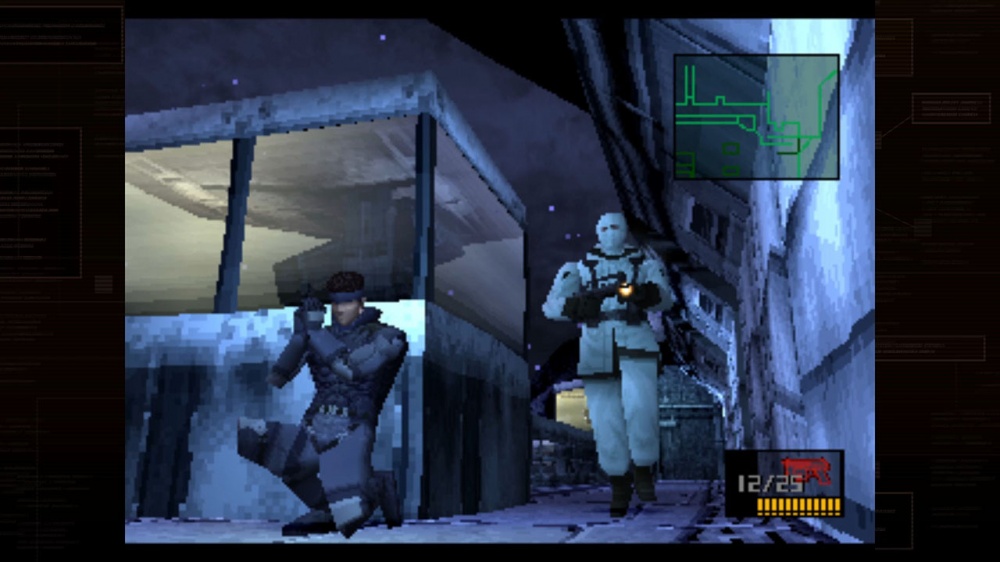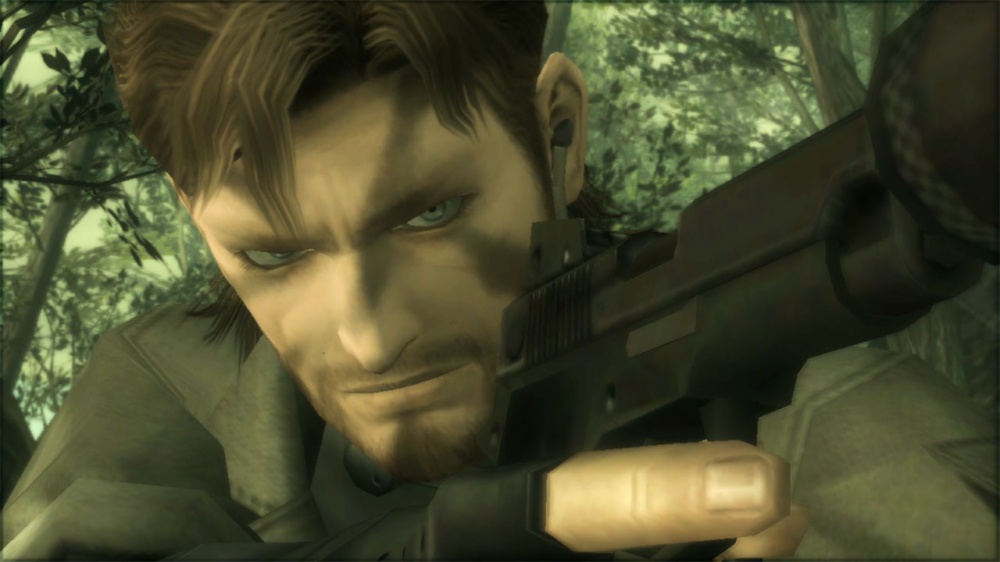System: Switch
Release date: October 24, 2023
Developer: Konami
Publisher: Konami
Even though I’m a certified Old-Head that writes about games, it’s difficult for me to properly encapsulate the cultural importance that Metal Gear games once exuded both pre and post release. The hype surrounding anything series creator Hideo Kojima touched was intense and all-consuming. Rest assured that if there was ever a month in which a new Metal Gear game was being released, just about nothing else mattered. The franchise has always been rightly held up as an example of unbridled creativity and auteur sensibility within the games industry – following the release of Metal Gear Solid V in 2015 however, Kojima left Konami under less than ideal circumstances. Rumors swirled regarding creative disputes and budgetary constraints – and following a poorly received Kojima-less spinoff in 2018, Metal Gear was put to bed.
So, why the history lesson? Well, because this reviewer feels as though Metal Gear is one of the few franchises in gaming that merits one. More importantly in this context, I feel many of the criticisms I fling toward Konami’s newly released Metal Gear Solid: Master Collection Vol. 1 throughout this review are heavily rooted in the franchise’s past. In fact, the entire product is dependent on the series’ past exploits, as it consists of the first five games in the series with a gaggle of expansions, curios, and spin-offs thrown in for good measure. Each game in the collection is available as a separate download on the eShop, however if you plump for the full package you’ll get – deep breath now – Metal Gear, Metal Gear 2, Metal Gear: Snakes Revenge, Metal Gear Solid, Metal Gear Solid: Integral/VR Missions, Metal Gear Solid 2: Sons of Liberty HD, Metal Gear Solid 3: Snake Eater HD, and both Metal Gear Solid: Digital Graphic Novel along with its sequel. Objectively, this is fantastic value – but as is the case with so many remakes and remasters of late, the entire endeavor is a double-edged sword.

Each game gets added to your Switch’s home screen as a separate application to boot into. Some may prefer this, but when I consider the entirely self-contained nature of past Metal Gear anthologies, this strikes me as a little slap-dash. Once you load up a game, you’re met with an incredibly slick and tastefully put together front-end representing the game in question – this was a nice surprise, as it’s one of the few minor additions Konami has made to these games in Kojima’s absence. Each title’s front-end features a nice bit of remixed music, a big dose of Yoji Shinkawa’s key-art from the original game, a “Master Book” which is essentially a strategy guide and making of-lite, along with a screenplay book (just the game’s dialogue repurposed as a big PDF). These are the kind of bonuses that would have provided tangible insight into each game’s heady themes and intense production cycle had they been overseen by Kojima and Company. As it stands, however, both the Master Books and Screenplay Books in particular come across as bitterly distant observations on each title. When you consider how Metal Gear essentially birthed gaming’s primo auteur, the absence of any mention of him and his team feels pointed and cold. The books’ musings on the introspective nature of each game’s narrative and themes feels similarly detached, like a syndicated 2 AM documentary on The History Channel – humming away in the background with all the depth of an auto-translated Wikipedia article.
Of course the main attraction here are the games themselves. I’m pleased to report that each and every title in the Master Collection holds up well on its own terms. However, Konami hasn’t done an amazing job of re-packaging them for modern consumption. The quaint charm of the four included 8-bit titles is enough to warrant a playthrough, even if getting to them requires a bit of digging. The two MSX originals – Metal Gear and Metal Gear 2: Solid Snake – are added to your home screen as a dedicated app. When you boot this app up, you’re presented with a truncated version of Metal Gear Solid 3 HD’s UI, before being dropped into an emulated version of the original titles. As a newcomer, this must be utterly baffling. Little stumbling blocks like that are constantly presenting themselves within this compendium. Now, as someone who knows that these emulated versions originate from 2011’s HD Collection, I can see why all of this is the way it is – with that said, it feels entirely at odds with how polished and refined each original game’s user experience would have been either on its own, or as part of those past collections. Every one of the 2D games runs without issue on Switch – it’s cute to see the building blocks of what would become Metal Gear Solid’s core gameplay loop years later. Suspend your disbelief for a moment and imagine you’re playing these games when they were released, and it’s easy to be wholly impressed by their ambition. Stealth games didn’t really exist back then – thanks to Metal Gear, they now did.

Skipping forward to 1998’s Metal Gear Solid and you get what I consider to be peak console-era Konami. Forward looking and utterly unique, Metal Gear Solid has cast an incredibly long shadow over the industry in the interim years since its release. Playing as Solid Snake, you’re tasked with infiltrating Shadow Moses island using – at least initially – just your wits and initiative. It’s easy to take for granted now, but one of the biggest strengths I can attribute to Metal Gear Solid is the depth of its stealth-action sandbox. Granted, the game is needlessly verbose at times as it divulges intricate and heavily politicized plotting – however, there’s more than enough for you to discover by pushing up against the game’s mechanics and systems – by “playing”. Guards tracking your footsteps, responding to you knocking walls, – Kojima has always had a keen eye toward telling a fleshed out and engaging story, but not once has it come at the cost of gameplay and player initiative. The game’s more dated elements like its fixed camera and lack of first-person aiming are sidelined by a supreme sense of polish and intent on the part of the designers. Metal Gear Solid knows exactly what it wants to be, and it executes on that mission statement just like Snake – with tact, strategy, and ruthless cunning.
Despite the underlying quality of Metal Gear Solid as a game, its presence in Konami’s Master Collection feels distinctly underwhelming. We’re very much in the realm of “what you see is what you get”, and I can’t help but feel that if this was the Konami of old, we would have gotten a lot more to chew on with this re-release. Prior to launch, the publisher went to great lengths to clarify that the original Metal Gear Solid runs at 1080p when docked, and at 720p when in handheld mode. While this is technically true – the output resolution is as described – the actual rendering resolution of the game fails to exceed that of the original PlayStation version. I absolutely love nostalgia – I could easily get by on the stuff for decades – but this is a step too far in my book. The game is intensely blurry on Switch and looks far worse than it needs to look when modern technology is involved. Anyone with even a low-grade smartphone can render a suite of PS1 games at high resolutions in the modern age, are we meant to believe that Konami are unable to do the same? In addition, Metal Gear Solid has a perfectly usable, native PC version that’s still being sold – could this not have been used as a base to work off of instead? A bigger ask would have been a rework of the game rooted in its GameCube exclusive remake “The Twin Snakes”, however this was clearly off the cards too. It’s a missed opportunity, and one I can’t feel wouldn’t have occurred if the franchise was still under its old stewardship.

The next title in the series, Metal Gear Solid 2, is also present and accounted for as previously mentioned. This game’s big “!” moment back in the day was its main character bait-and-switch. We all thought we’d be sneaking it up as our good mate Solid Snake, instead we got to inhabit the foppish, slightly whiny and “less macho” sneaking suit of Raiden – or Jack, to call him by his real name. Kojima intended for Raiden to be interpreted this way in order for Snake to be seen as more heroic, manly and infallible – despite this, Raiden is a wonderfully fleshed out character with more than his own stake in the story. Metal Gear Solid 2 is a far more personal journey, even if the backdrop is even more global and all-consuming. The game’s sandbox still stands out as a high watermark in the industry – each enemy encounter can begin, end or be avoided entirely in a dizzying amount of ways. A smorgasbord of gadgets, weaponry and physical maneuvers – enough to keep multiple playthroughs fresh and engaging – are included for your perusal. What could have been the series’ “difficult second album” excels in terms of its narrative, its pacing, and its stealth action.
As is the case with each game in this collection, there is a big “but” looming large over Metal Gear Solid 2’s presence in the Master Collection, not unlike a gigantic bipedal walking nuclear tank. Visually, the game looks a little off – textures in particular look overly sharpened compared to both the original release, and the “HD Collection” version that this port is based off of. Performance is the fly in this particular ointment however, with the game curiously capped at 30 FPS on Switch. Back on PS2, it was a 60 FPS experience. The HD Collection, developed by port-gods Bluepoint and released in 2011 for the PS3 and Xbox 360, featured the game running at 60 FPS. I’d argue it’s nigh-on indefensible to have this game running below that on Nintendo’s hybrid machine. Much like Metal Gear Solid 1, the game’s rendering resolution never exceeds that of the original version – 720p in this case. The game still controls well, don’t get me wrong, however it’s clear in certain instances that a 60 FPS output was the intention. The opening section for example, on the deck of a military tanker ascending the Hudson River, is laden with rain and weather effects that turn to mush at 30 FPS – it completely compromises both the look and feel of the game. Again, Metal Gear Solid 2 is still a phenomenal title, this just feels like laziness that is totally uncharacteristic of the polish you’d associate with the franchise.

The final genre-defining feather in the Master Collection’s cap is Metal Gear Solid 3: Snake Eater, which once again has been adapted from the work Bluepoint did for 2011’s HD Collection. For many, Snake Eater is the pinnacle of the franchise, and it’s hard to argue with that assessment. This Cold War era prequel delves into the narrative root of the series, and contextualizes both prior and later entries’ events in grandiose fashion. Boss fights are a particular highlight this time around – the rogues gallery of misfits Snake comes up against are fine examples of the sort of creativity Kojima Productions was known for in its heyday. I definitely need to tip my bandana toward the latter half of the pacing, which is some of the most exquisitely edge-of-your-seat stuff I’ve seen in games. The way each of the narrative and gameplay elements coalesce into a truly nail-biting finale absolutely takes your breath away, and despite being massively long and typically overwrought at times, still leaves you wanting more. Technically, Metal Gear Solid 3 on Switch suffers from many of the same issues that Metal Gear Solid 2 also falls victim to, but I personally felt less impacted by them during my time with the game. It runs at 30 FPS, just like its predecessor – however, it also ran at this framerate on the PS2, so it doesn’t look or feel too out of place in this particular instance. I’d still argue that a game like Metal Gear Solid 3 should be running at a much higher frame rate on Switch than it currently does.
The Verdict

At various points during my time with Konami’s Metal Gear Solid: Master Collection Vol. 1, I found myself asking the question, who exactly is this for? Granted, it’s a relatively exhaustive assembly of past Metal Gear and Metal Gear Solid titles – however every single game included in this bumper package is inherently compromised in some pernicious way. For newcomers, the confusing front-end and surface-level bonus content is sure to leave a mixed impression – die-hard fans on the other hand will remember when the series was handled with a level of care and purpose not seen in this collection’s technical makeup. The sheer quality of each game in this release just about manages to supersede the ill-fitting elements, but I can’t in good conscience fully recommend Metal Gear Solid: Master Collection Vol. 1 based on the caveats in this review. Metal Gear Solid deserves better, and so do you.
Metal Gear Solid: Master Collection Vol. 1 copy provided by the publisher for the purposes of this review.